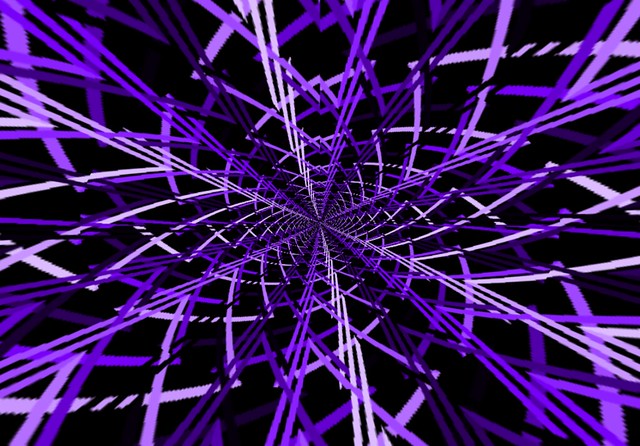
"It's just a matter of time" - the battle cry of the fatalist.
"Matter of time". Now there's an oxymoron if I've ever heard one. Time, of all things, is supremely intangible. All the shared interactions of matter, energy and whatever else one might conceive of make up "time"; an image of "time" is the totality of all action, ever. "The end of time" equates to The End, capital letters. Therefore, time is All. And yet, the human mind can dream up a representation for such a concept - the "fabric of time".
Personal experience tells us that individual observers experience time as a progression from one event to the other. The classic view of time is linear and unidirectional, with the observer always standing on the head of an ever-progressing arrow, pointing into the future and trailing a path of history behind it as it races along threads in the fabric. The confounding property of non-reversibility has lead to a view of causality where the cause must predate the effect - events in the past motivate action in the present, leading into a future determined by the consequences of said actions. But it's just as true that the universe is not being pushed from behind, it's being drawn from the future. As the perennial wave of the tomorrow crashes on today's ever-advancing shore, we shape the coast by adjusting our present actions according to our estimate of Things to Come - trying, with all the might of our will, to shift the weights of the probability distribution so that it would collapse towards the seemingly pleasant actualities. The causes of our actions are found at least as much in potential futures as they are in the concrete past; in the is-not as the was and the is.
So, yeah, time's amazing - but isn't it primarily for measuring? Durations and speeds and such. Well, yes: time contextualizes events in the other dimensions, eg. provides a way to compare two spatial transitions with respect to a new property, "speed" (defined through the change in time, "duration"). A lot of effort has been expended in order to develop ways to measure changes in time. An agreed-upon framework of "keeping track of time" helps facilitate synchronicity, but at its core, time corresponds to changes in entropy.
In music theory, the temporal atom is, roughly, the period of the finest granularity of change detectable in a composition. The human brain is said to experience about 40 events per second ("thalamo-cortical 40 Hz") - the temporal atom of consciousness, so to speak. These atoms break down far more easily than their material counterparts (being that they are pure abstractions), and in so doing, give rise to the thought of temporal subatomics: the stuff of the in-between that separates two things within the smallest measurable distance from one another. The fractal foam between the lines of an imaginary ruler.
Here's the video:
It tried to enter the Assembly 2011 short film competition, but didn't qualify. The song is Next Stop Tuuri by zov.
No comments:
Post a Comment